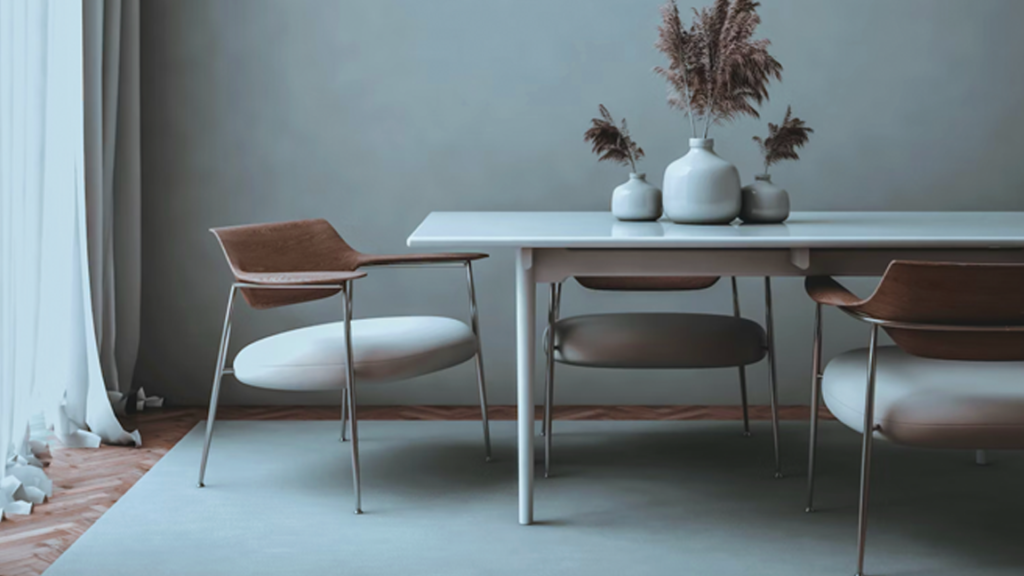
Every so often, I like to provide my style of “op-ed” on an emerging color or design trend. It’s fascinating to me to reconcile what trends and styles come in and out of the fashion zeitgeist. There’s an interior design color trend that’s emerged within the past few years that I’ve seen, but it was not clearly defined; I didn’t know it was “a thing.” I’m speaking of color drenching. “What the heck is color drenching?” you may ask yourself; you wouldn’t be the first to be stumped by the term!
As a color specialist, it’s my job to keep up with the latest trends, analyze their intentions, and distill the strategies to share with all my clients and readers. In this article, I will share my thoughts on color drenching, its pros and cons, and whether or not it’s a great choice for most homeowners.
It does sound risky to “drench” your interior with anything, right? Step back for a minute and think about this design aesthetic and what it takes to make this work. When an interior space is color-drenched, it means it’s designed with one color in mind, and that color doesn’t just coat the walls; no, it’s everywhere; a real color-drenched interior means that the ceiling, trim, railings, doors, and sometimes even the floor all have the same color. Surprisingly, there are very few to no neutrals or complimentary color layering when color drenching.
There are two primary methodologies for color-drenching applications.
The first is the most daring, applying the same color everywhere in a space without trying to layer in various hues or saturation tones. The results of this create a very flat yet bold color statement. With this style, you can elect to create various surface textures, such as a smooth/reflective sheen on the doors and a matte finish on the trim or ceiling. This application is by far the most adventurous form of color drenching.
The second strategy for color drenching a space is to use one color but include alternate hues and saturation points; if you chose green as the primary color to drench the room, you could layer 2-3 alternate greens to outfit the space. Emerald green could be the base color for the walls, but the trim may be a lighter grass green, and the sofa even is a deep forest green; this strategy created a monochromatic color scheme with layers and dimensions that the first drenching strategy avoids.
If you’re a frequent reader of my articles, you’ll know I’m always a proponent of exploring color options, and I am open to being adventurous and inspired when making color choices! Now, with that said, I can also take a collected perspective on the commitment that color drenching requires. I would not recommend it to homeowners who are hesitant to be extremely bold and dedicated to a design scheme. What’s different with color drenching from many other design strategies is that you cannot “dip your toes in,” so to speak, and see how you like it. Color drenching only accomplishes its goal if the entire room is completely committed to the scheme, and being half committed may yield confusing results.
I don’t like to list the pros and cons of a design strategy because I truly believe that one person’s pro is another’s con; it all depends on taste and personality. With color drenching, I feel most people will instinctively know whether it’s something they will appreciate or not. Be brave, bold, and true to yourself with your design choices, but don’t commit to a strategy that doesn’t speak to you because it’s a current trend. Trends come and go; your style, while it may grow and evolve over time, will not change as fast as the color trends. My suggestion is to give yourself the time to consider whether this idea is right for you, whether you can commit to it, and whether your heart is all in.
If you get excited about the idea of color-drenching your interior spaces, start with a smaller room that is not heavily used. What do I mean by this? Well, don’t start by color-drenching your living room or dining room in intense, saturated colors! Look to spaces in your home you’d like to create the visual feeling of more space, as color drenching is known to help make small spaces feel larger and less cramped. I would suggest trying out your laundry room or perhaps a modest home office to start. You can plan your colors as I did by creating a color palette with the Color911 color app and using the colors I added to my palette. If you love the results, you can migrate the scheme to larger, more active spaces in the home. For a design aesthetic that is all-consuming, I suggest you start with one room at a time and see how it goes.
So, what do you think about color drenching? Is it a fad/overly indulgent? Is it too much of a good thing? Or, is it just what we could all use right now to break out of the predictability that’s dominated interior spaces for decades!?
Please share your thoughts with me! I’d love to get your feedback on this trendy design scheme.